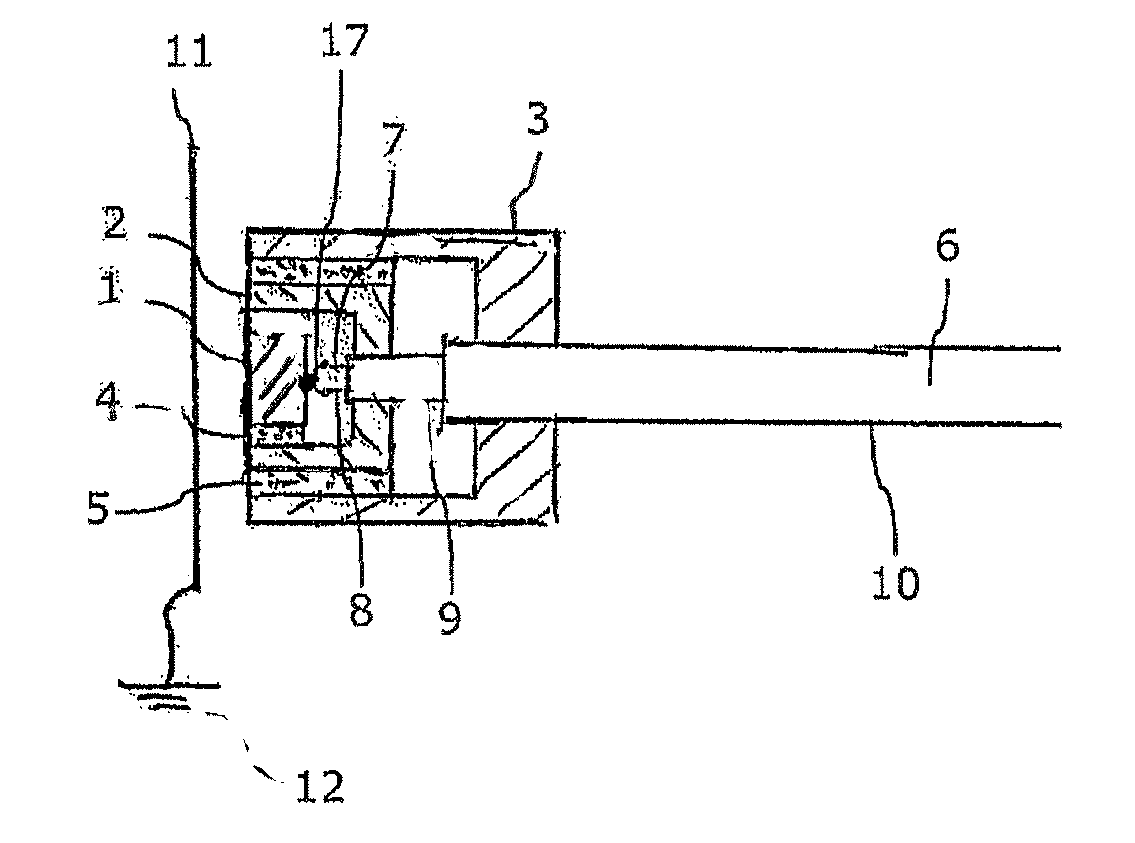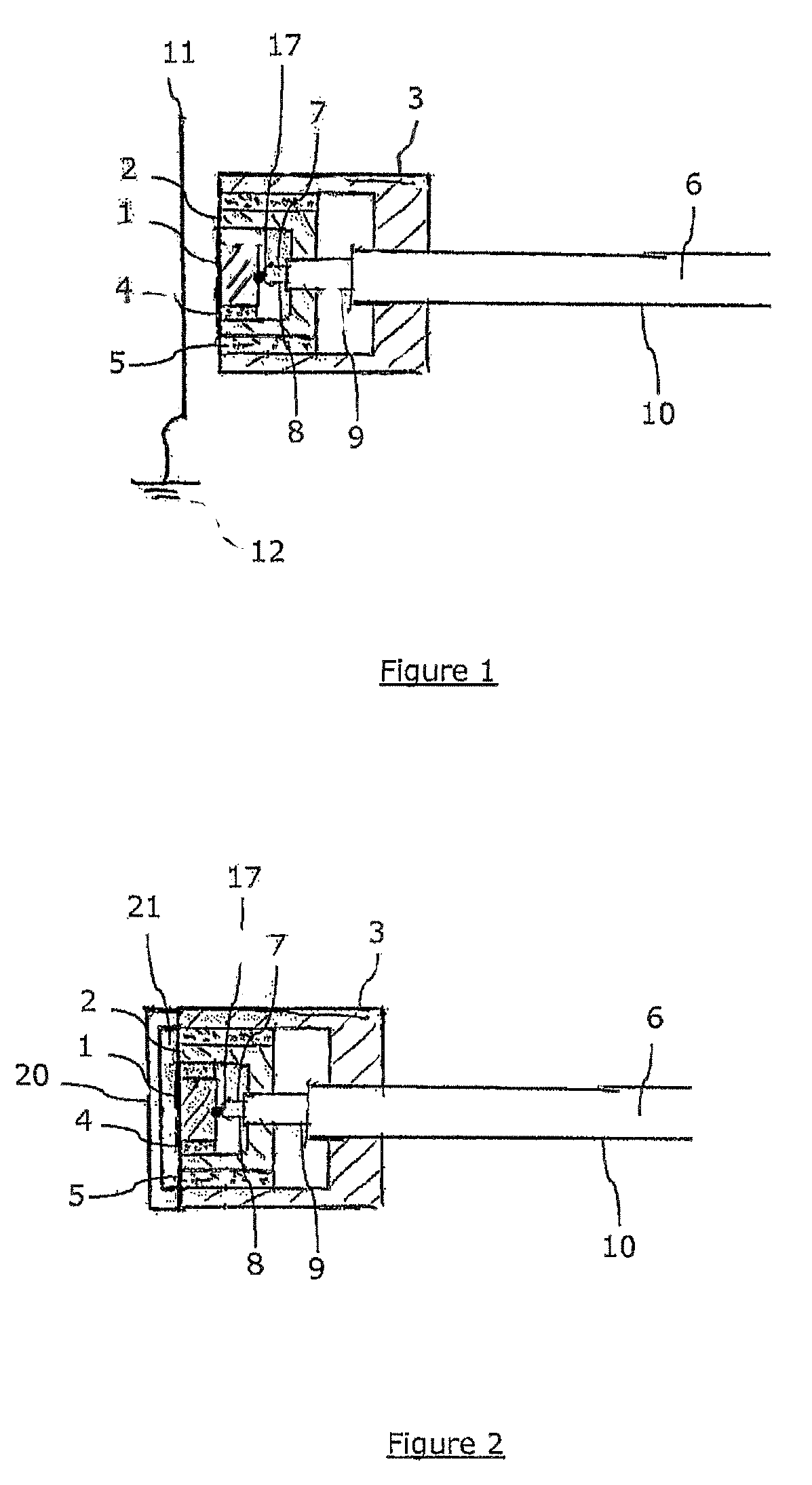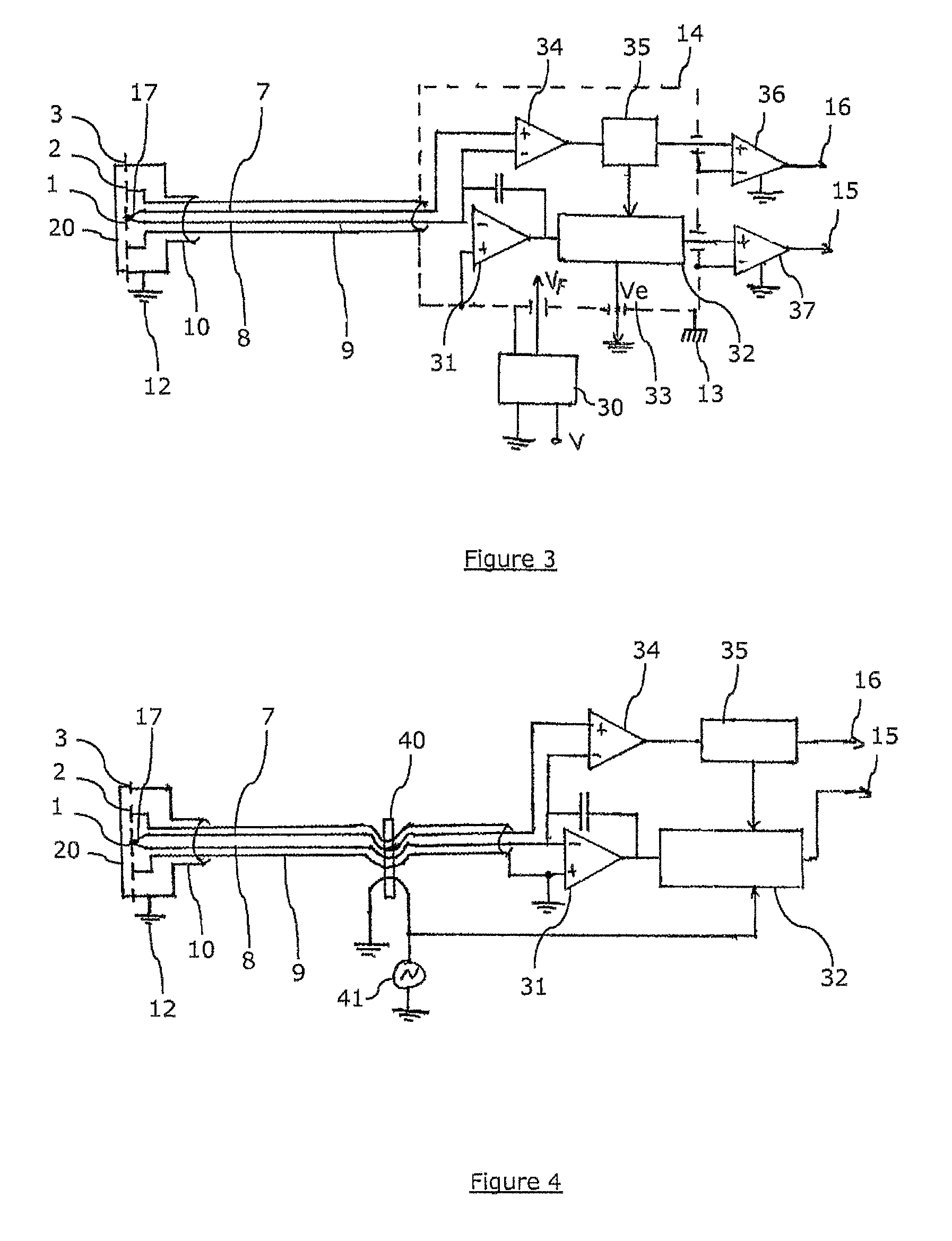Capactive pressure sensor incorporating a temperature measurement and compatible with hot environments
a temperature measurement and capactive pressure sensor technology, applied in the direction of measuring devices, instruments, fluid pressure measurement using capacitance variation, etc., can solve the problems of optimum conditions, amplitudes that can be considerable, and uncertainty on pressure measurement is simply reduced but remains significan
- Summary
- Abstract
- Description
- Claims
- Application Information
AI Technical Summary
Benefits of technology
Problems solved by technology
Method used
Image
Examples
first embodiment
[0078]FIG. 3 illustrates the electronics of a pressure sensor equipped with a thermocouple, based on floating bridge electronics,
second embodiment
[0079]FIG. 4 illustrates the electronics of a pressure sensor equipped with a thermocouple, based on a transformer guard generation.
[0080]According to a preferable but in no way limiting embodiment, the device according to the invention is substantially cylindrical. The embodiment shown enables sensors operating at temperatures higher than 600° C. to be made.
[0081]In reference to FIG. 1, the capacitive sensor comprises the following elements:[0082]a measurement electrode 1, which may be made of platinum, a Dilver type alloy, a refractory metal alloy or a superalloy,[0083]a guard electrode 2, which may be made of platinum, a Dilver type alloy, a refractory metal alloy or a superalloy,[0084]a body 3, which may be made of platinum, a Dilver type alloy, or a refractory metal alloy or a superalloy,[0085]dielectric rings 4 and 5, which can be made of refractory ceramics, for example alumina-(Al2O3) or boron nitride-(NB) based,[0086]a triaxial cable 6, which comprises two sensor conductors...
PUM
| Property | Measurement | Unit |
|---|---|---|
| temperature | aaaaa | aaaaa |
| temperature | aaaaa | aaaaa |
| temperature | aaaaa | aaaaa |
Abstract
Description
Claims
Application Information
 Login to View More
Login to View More - R&D
- Intellectual Property
- Life Sciences
- Materials
- Tech Scout
- Unparalleled Data Quality
- Higher Quality Content
- 60% Fewer Hallucinations
Browse by: Latest US Patents, China's latest patents, Technical Efficacy Thesaurus, Application Domain, Technology Topic, Popular Technical Reports.
© 2025 PatSnap. All rights reserved.Legal|Privacy policy|Modern Slavery Act Transparency Statement|Sitemap|About US| Contact US: help@patsnap.com



